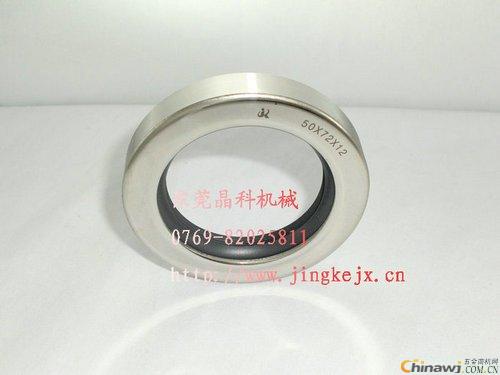Reasons for Oil Leakage in Air Compressor Oil Seals and How to Troubleshoot
Air compressors, especially those from Dongguan Lingge, are widely used in industrial settings. However, during operation, users often encounter common issues such as oil leakage, overheating, and abnormal noises. This article will focus on oil leakage from the oil seal and provide detailed solutions.
Common Fault Phenomenon: During daily use, oil leakage from the air compressor is a frequent problem. You may notice oil oozing or dripping from the surface of the unit, which can lead to performance issues and even damage if not addressed promptly.
Main Causes of Oil Leakage:
1. The stainless steel oil seal may become damaged, cracked, or fall off, leading to oil leakage.
2. If the spindle is loose, it can cause the oil seal to fail, resulting in oil seepage.
3. Leaks can occur at the joint surfaces, especially where the inlet and return oil pipes connect. Loose connections are a common culprit.
4. An overly tight belt can cause excessive wear on the main shaft, eventually leading to oil seal failure.
5. Casting or manufacturing defects in the housing can also result in oil leakage, especially in older or lower-quality units.
Troubleshooting Methods:
1. Inspect the oil seal area thoroughly. Look for cracks, damage, or deformation on the inner lip. If any of these issues are found, replace the oil seal immediately. Also, check the valve, imported pump, and industrial washing machine components if they are related to the system.
2. Examine the contact surface between the oil seal and the spindle. If there are scratches or deformations, the oil seal should be replaced to prevent further leaks.
3. Ensure that the oil return path is clear and unobstructed. A blocked or improperly sized oil return pipe can increase crankcase pressure, causing the oil seal to leak or fail. Make sure the pipe is not twisted or bent, and maintain the minimum required diameter.
4. Check the fit between the oil seal and the housing. If the dimensions do not match the specifications, replace the oil seal with a proper one.
5. Measure the clearance between the spindle neck and the bushing. If the clearance is too large, both the bushing and the oil seal should be replaced to restore proper sealing.
6. Inspect all gaskets and seals for wear or damage. Replace them if necessary. Tighten the bolts on the inlet and return oil joints, and check the threads on the housing for any signs of damage.
7. Adjust the belt tension. It should be tight enough so that pressing the belt with your thumb moves it about 10 mm. Too much or too little tension can cause problems.
8. Finally, inspect the casting and machining quality of the housing. Any defects should be repaired or replaced to prevent future oil leaks.

Stainless Butterfly Valve,Globe Valve Types,Sluice Valve,Brass Gate Valve
Zhejiang Philic Fluid Control Co.,LTD , https://www.philicflow.com
